Vintage Motel Converted Into Affordable Rental Units With Mid-century Flair
Reusing our old buildings can help address the affordable housing crisis
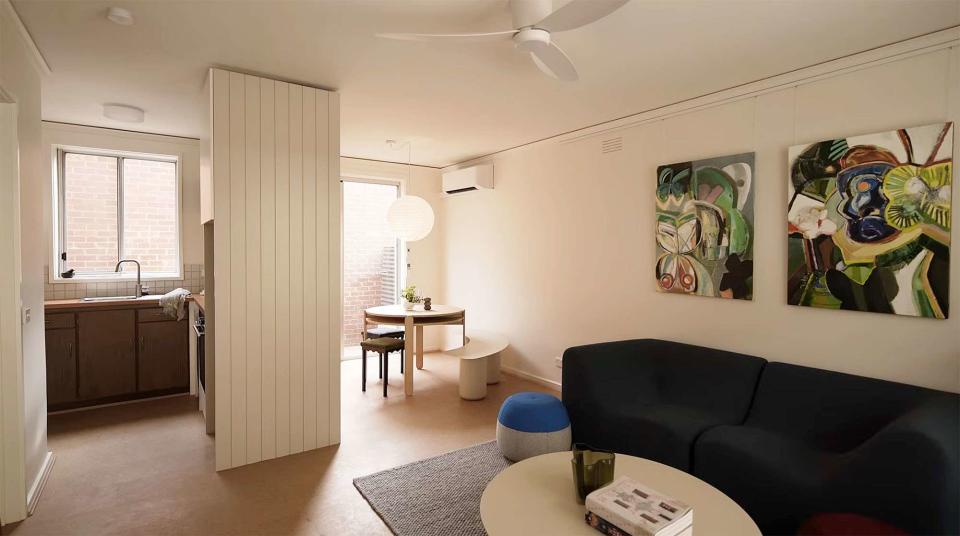
Simple Dwelling
It's getting harder to find affordable housing in many major cities around the world. It's not just soaring property prices for people looking to buy a home of their own, but also soaring rents and a dwindling supply of long-term rental properties.
Chalk it up to the detrimental effect of short-term rentals, or growing inflation and stagnating wages, but the global housing market is broken and the phenomenon is dividing entire countries. But it's a complex problem that requires a multi-faceted approach, so aiming for new, purpose-built rentals should not be the only solution.
In fact, there is a potentially more sustainable approach: renovating and retrofitting underutilized buildings and converting them relatively quickly into affordable housing, while reducing the upfront carbon emissions that typically come with new builds.
This idea of "renovate-to-rent" was what inspired the team behind one project in Melbourne, Australia, which transformed a shuttered motel into a series of affordable rental units, as we can see in this tour via Simple Dwelling:
Spearheaded by property developers Milieu in collaboration with Australian design firm Breathe Architecture, the Park Street motel dates back to the 1970s and now offers 17 renovated apartments for rent. The original building is well-situated in Melbourne's inner suburban district of Brunswick, with public transportation and a number of green spaces nearby.
The exterior parking spaces were converted into communal landscaped areas where residents can sit and interact with neighbors, with special attention being paid to construct sturdy elements like outdoor seating and planters with native vegetation, vegetable gardens, as well as installing electric barbeques, and parking for bicycles.
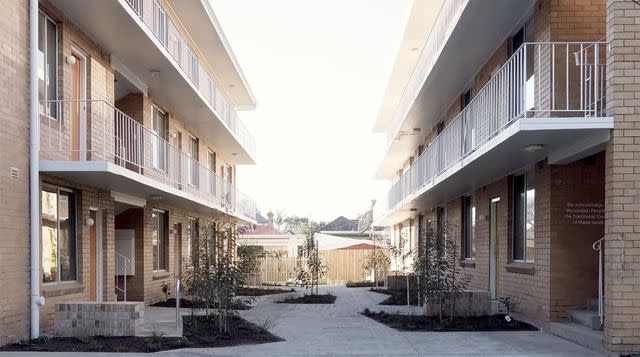
Simple Dwelling
Inside one of the apartments, we can see that the redesigned interior manages to revive some of that mid-century charm through the open plan layouts, yet updates it for the needs of today's renters.
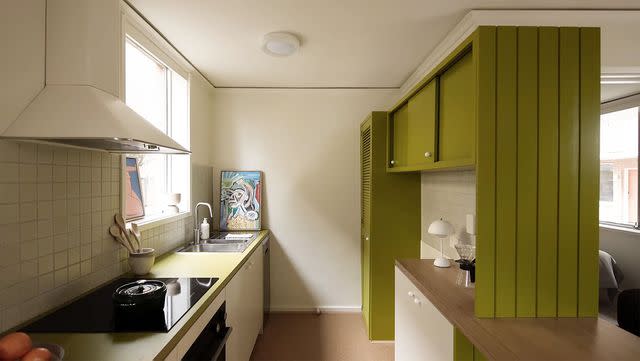
Simple Dwelling
As the architects put it, they opted for a "light touch approach" to the renovation that not only respected the building's history, but at the same time "diverts tons of construction waste from landfill and supports a circular economy by discouraging excess production and consumption."
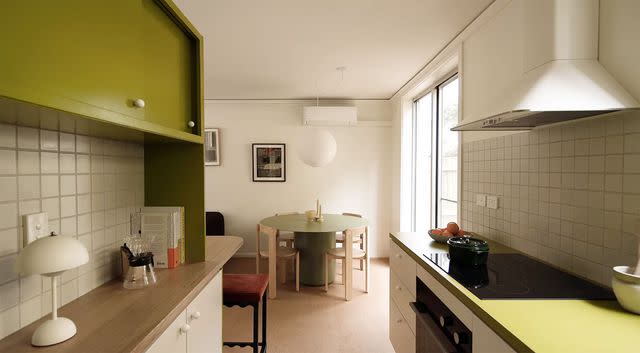
Simple Dwelling
Emphasis was placed on creating streamlined spaces that are filled with light, and yet feel like home, say the architects:
"At the core of this undertaking was the aspiration to create a sense of belonging within the reimagined dwelling. Internally, we embraced the building’s original charm, highlighting its timeless details. A joyful palette of colours animates the building and materials such as Laminex, cork, mosaic tiles, and walnut-stained timber lend a touch of nostalgia, bridging the gap between past and present."
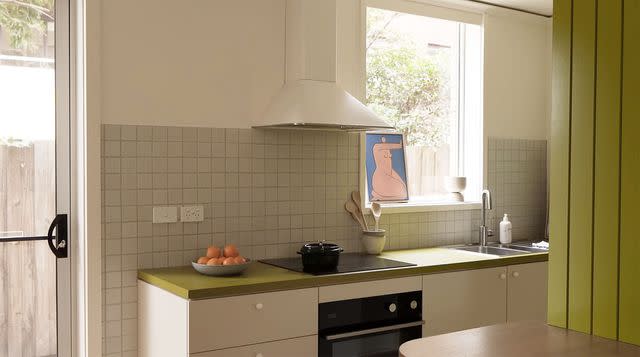
Simple Dwelling
Under the proverbial hood, the building's utilities were completely overhauled, with gas hookups and appliances swapped out for electrical connections and energy-efficient devices instead.
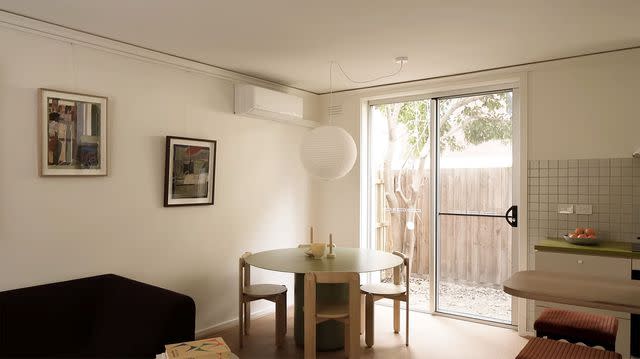
Simple Dwelling
In addition, a solar power array was installed on the rooftop, which works in conjunction with an efficient heating and cooling system to reduce the buildings' energy consumption.
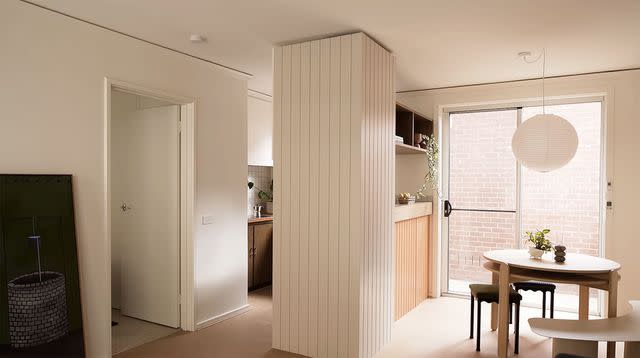
Simple Dwelling
This is also facilitated by other less energy-intensive options chosen for the units, like ceiling fans, induction cooktops and even clotheslines.
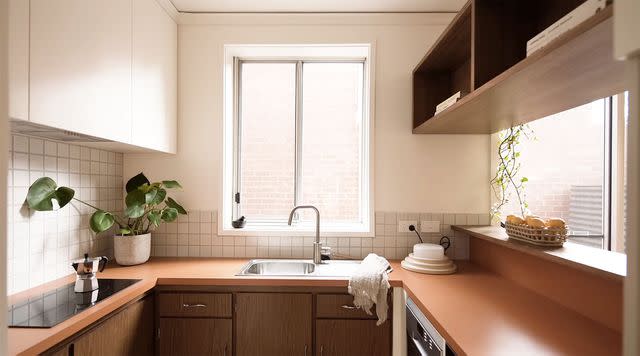
Simple Dwelling
All of these installations, plus the possibility of the tenants signing up for government-accredited programs that invest in renewable energy, help the building to come closer to being carbon neutral in operation.
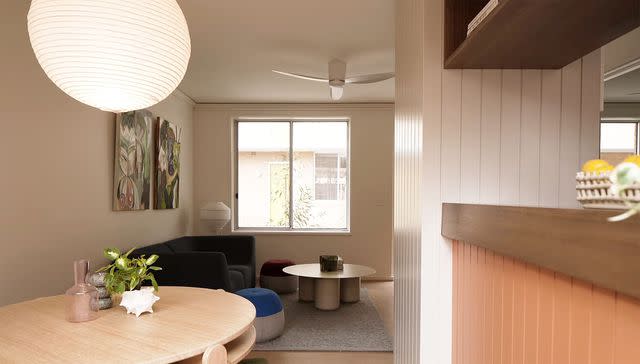
Simple Dwelling
The Park Street project is a great example of how and why the reuse imperative is so important; now, saving buildings matters more than ever, as many of our cities already have existing building stock that could potentially be converted into housing, and doing so will also be a much more sustainable option in the long term. As the architects explain, it's all about reducing upfront carbon emissions:
"Renovating existing building is a more sustainable approach, not only because of the reduction of waste on site, but also the reduction of emissions from the production of new materials."
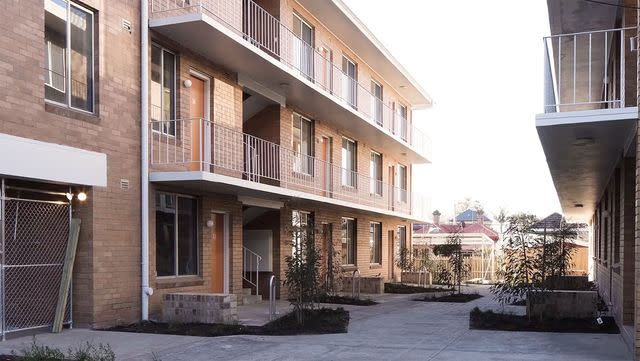
Simple Dwelling
But even if one isn't swayed by the sustainable angle, a renovate-to-reuse approach is also much, much faster. That could be a boon to cities that are currently looking for ways to quickly boost their housing stock, and a potential relief for many who are searching anxiously for an affordable rental, as the architects also point out:
"A significant benefit of this renovation-to-rent model is we can deliver these apartments to the rental market at a significantly faster rate compared to typical new build-to-rent [apartments]. A new build may take up to two years, and that's just the construction period, whereas [the] Park Street [renovation] has taken just four months. Increasing supply as fast as possible is a key strategy to curbing Australia's housing affordability issues."
Read the original article on Treehugger.

